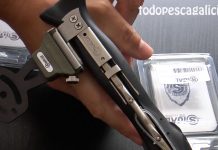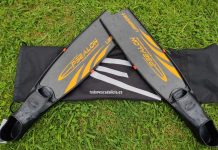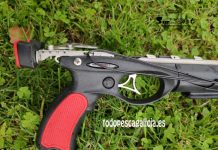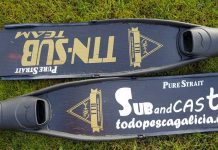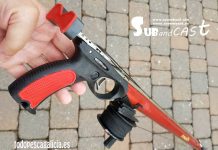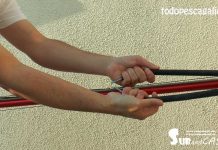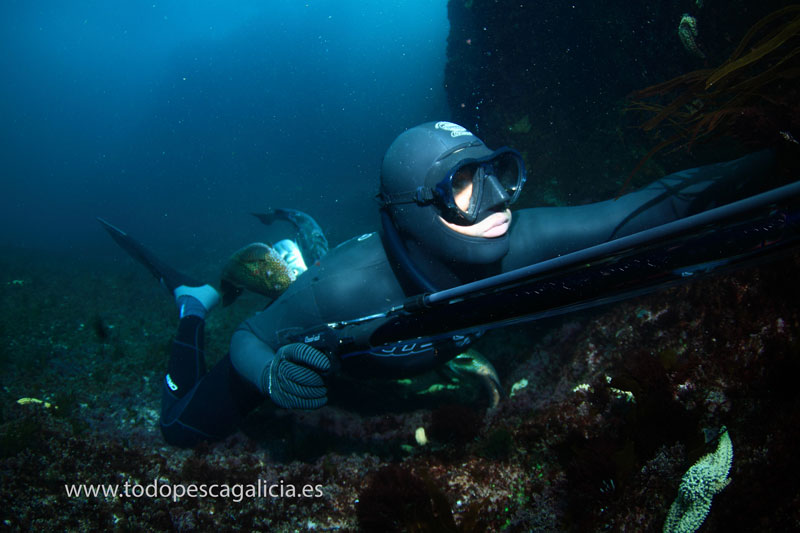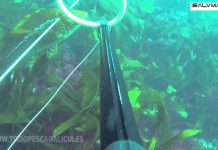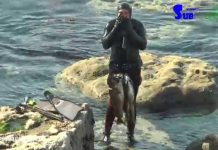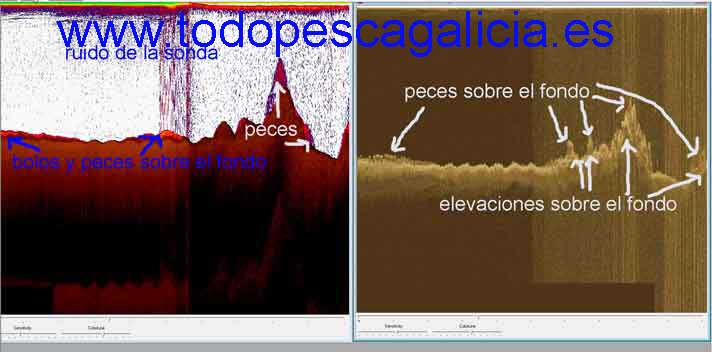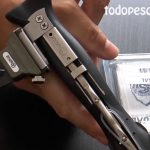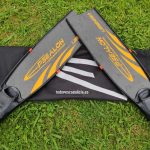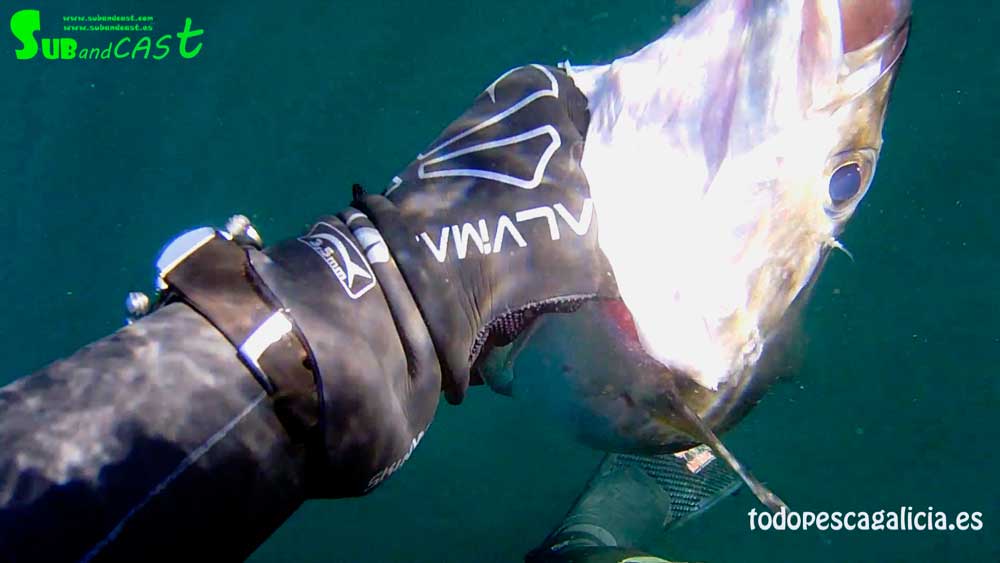THE WHITE SEABREAM
The white seabream is one of the most common species in Galicia and Atlantic coasts and it is also one of the most wanted. The abundance of this fish, the wide variety of techniques that can be used, and the depth in which we can find them, makes this fish available to any fisherman in any situation.
First of all we should regard that there are different white seabream subspecies, with different behaviors. Let’s see them:
DIPLODUS SARGUS: the one known as white seabream. It has the usual black vertical stripes. Sometimes it’s totally gray, even almost black. It has big teeth. We can find it in the breaks in caves, in deep waters, with the white sea bass… It is, probably, the best quality one of the seabream species. 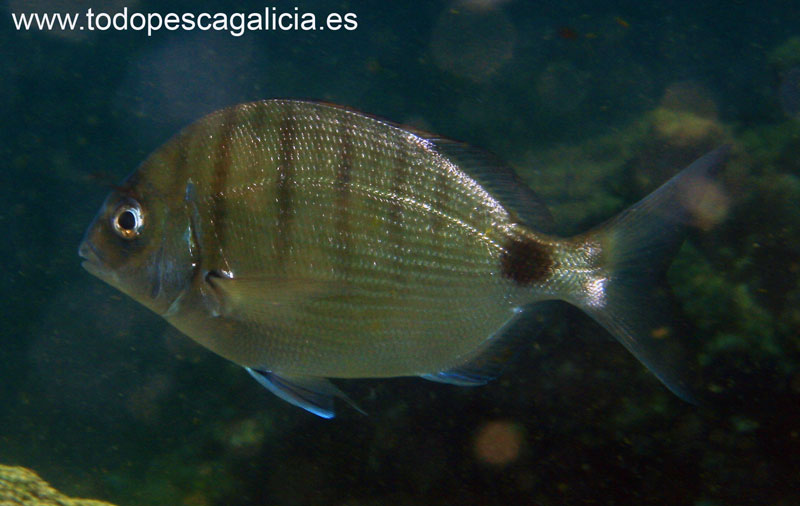
DIPLODUS VULGARIS: the common two banded seabream. It is easy to identify due to the two vertical stripes, yellowish fin and smaller mouth. We will see it deeper than the white seabream, in small schools. The waiting technique is usually the most effective. It’s quality is not as good as the white seabream, its flesh is softer and the taste is worse.
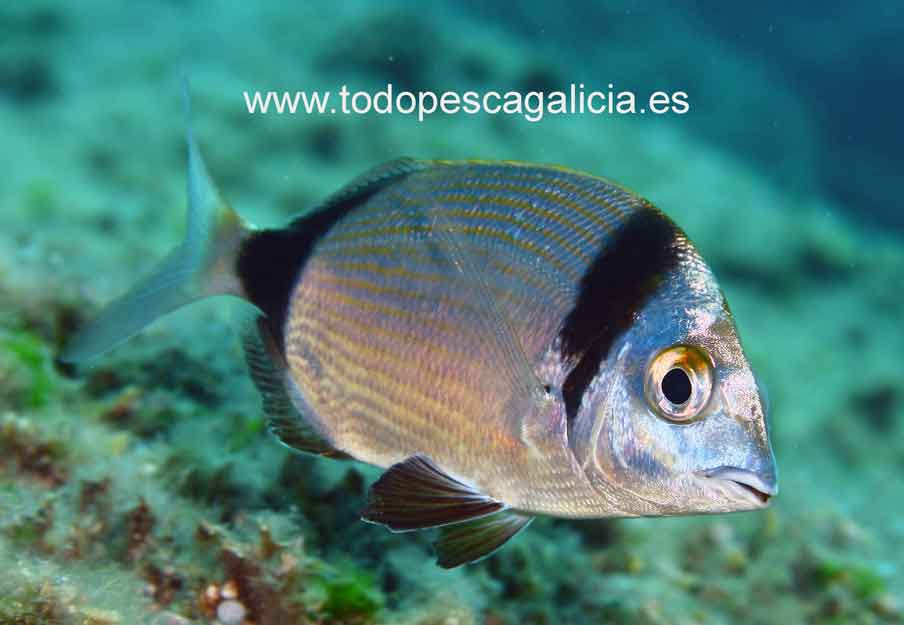
DIPLODUS CERVINUS: the zebra seabream. Very easy to spot due to it’s dark brownish color and the vertical stripes. The mouth is way smaller, with different and flatter teeth. It grows up to bigger sizes. We find it in deeper spots and in small schools.
OTHER: puntazzo puntazzo (sharpsnout seabream) or diplodus annularis (Annular seabream).
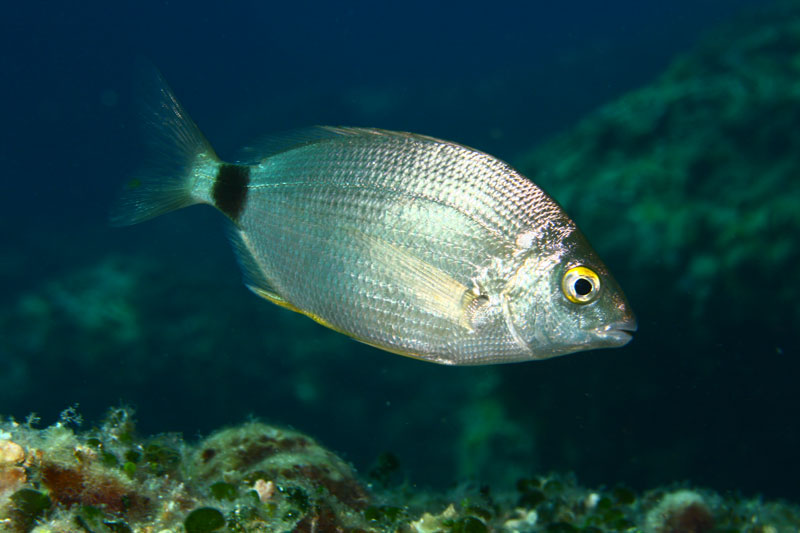
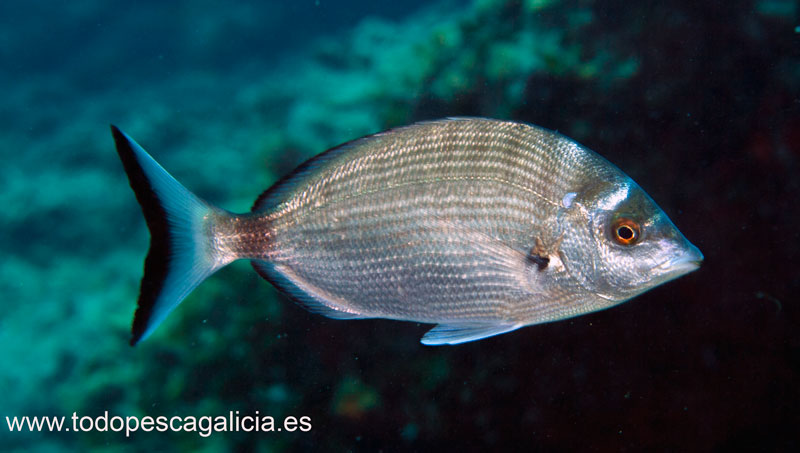
FISHING TECHNIQUES
Spearfishing in the breaks
As we have said, the top quality one among the seabream is the white seabream (Diplodus Sargus), so we will focus on this one.
The white seabream is without any question the king of the spearfishing in the breaks. The easiest and most archetypal to be found with this style. So we will be able to capture it during all year. It usually looks for exposed parts of the shore, with a bit of swell. It get close to the rocks to eat mussels, barnacles, worms or crustaceans. It is common to see them in that part of the rock that gets covered with the wave and gets dry when it goes down again. They will be moving around there, looking for the food. In 0 meters depth. 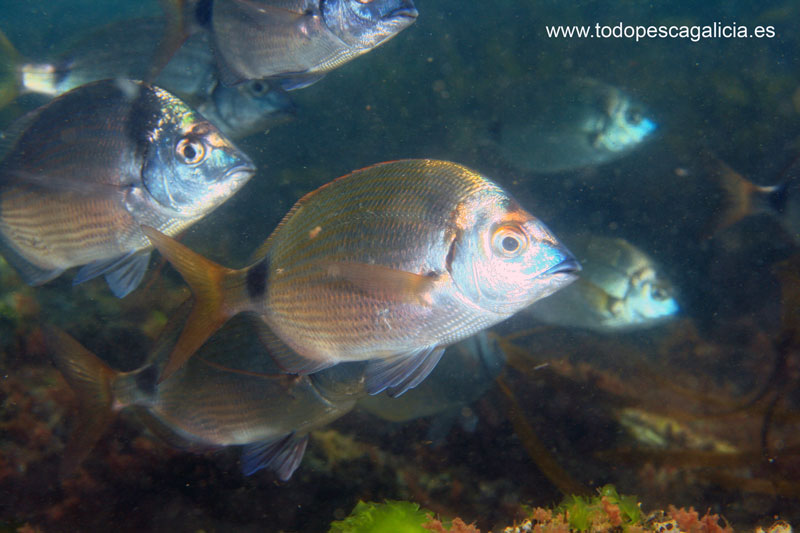
Once upon the time, a fisherman told me that if I couldn’t see white seabream was because I was not close enough to the rocks. Ans this is true a lot of the time. But we have to be carefull, because it can be dangerous depending on the swell and the type of coast. It’s important to be aware of our own skill level and our limits in this fishing style. Be carefull!
They will be there with very little swell (it will be more difficult to get close to them) as well as with big waves. We have to pay special attention to the headlands and the canals between the rocks where the wave goes up and down. It’s a relatively easy fishing when you know where to look.
And also, it can be practiced all year long. Although there are seasons when there is more amount and with bigger sizes. As we are going to see later.
Spearfishing in caves
It’s also very common to catch white seabream in caves. We can find big schools inside cracks and big rocks. This fishing is very easy sometimes, because with each shot, the group get closer to each other (other times they scape after the first shot). Specially during the spawning season or if there is any danger around (dolphins for example). 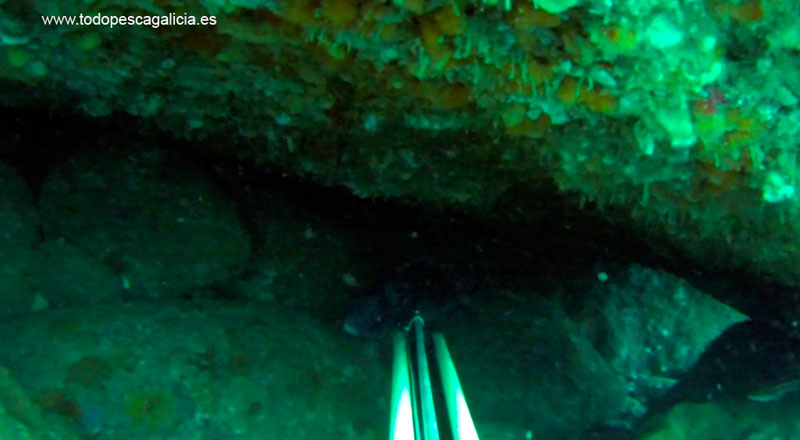
Sometimes we will see that we can make them go inside the caves just by showing up or making some noise. Although this is less and less common every day. They learn fast.
During the white sea bass spawning season, it will be common to see them in between them and sharing the same caves.
The waiting technique
The white seabream its suitable for the waiting technique. Sometimes we find big schools in open waters or close to the shore. The waiting technique is good for this situation. The first ones in getting close are the small ones. And we will have to hold on until the big ones decide to get closer.
During the spearfishing in the breaks, when the swell doesn’t allow us to enter in some specific areas, we can wait a bit deeper and the group of fish will come, giving us some chances.
Spearfishing in the kelp
The easiest technique during the summer. The white seabream, specially during the low tide, go inside the kelp forests to rest. If we move slowly, between the canals and under the algae, we will be able to capture them. Being stealthy is a must. 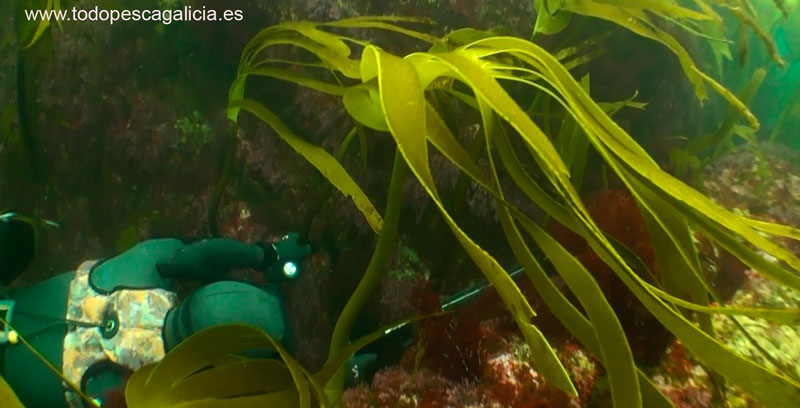
We will also find them in dark canals and along the pinnacles’ walls. Even in really shallow water. We will see them in the shades, resting. As we have said, a slow and silent fishing is the key.
THE SEASON
Although we can find white seabream all year, there are periods in which we can find more. And easier to fish. Let’s see it:
Winter
During the winter, with the cold water, the white seabream fishing (and also the white seabass) is highly recommendable. Specially in the breaks. It allows us to stay in shallow water, moving fast to compensate the low temperature. Also, the big swells with big waves will be common, and it will allow the spearfishing in the breaks.
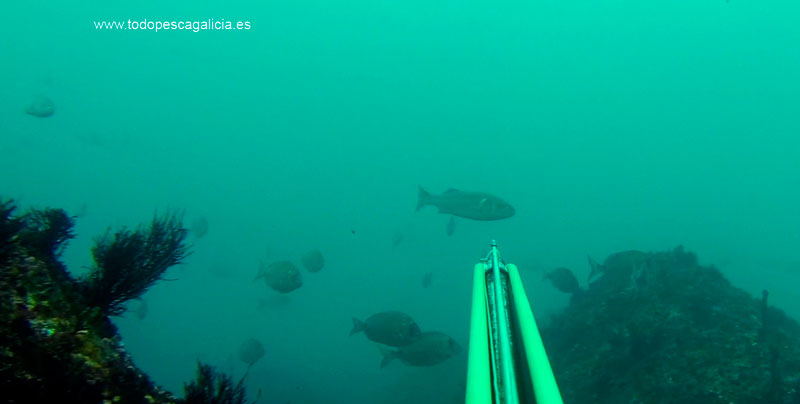 Fishing in the caves turns easier due to the lack of seaweed. We will spot the caves better, and a lot of times, the white seabream getting sheltered in them. It will be the moment to learn new spots and mark them for the sumer (they will give us good surprises when they are covered by the kelp).
Fishing in the caves turns easier due to the lack of seaweed. We will spot the caves better, and a lot of times, the white seabream getting sheltered in them. It will be the moment to learn new spots and mark them for the sumer (they will give us good surprises when they are covered by the kelp).
We will also find schools of white seabream in the open water, specially close to pinnacles. A lot of times, with white seabass behind them. So one of the first things we will do when we arrive at these points will be to wait and see if they are around.
Spring
The kelp starts to grow in the spring. Of course the spearfishing in the breaks is still good. It gets better in the caves, because they feel more sheltered. While the season advances, with warmer waters and the kelp growing, these fish will look for the shelter that the caves and the kelp forests can offer them.
Summer
The kelp is already big in this moment. A lot of caves are almost impossible to be found. Is the moment to fish in the kelp forests. The canals that allow us to go inside the kelp forests are very good spots. Also the pinnacles and underwater crests that make “kelp umbrellas”, with shade where they like to hide.
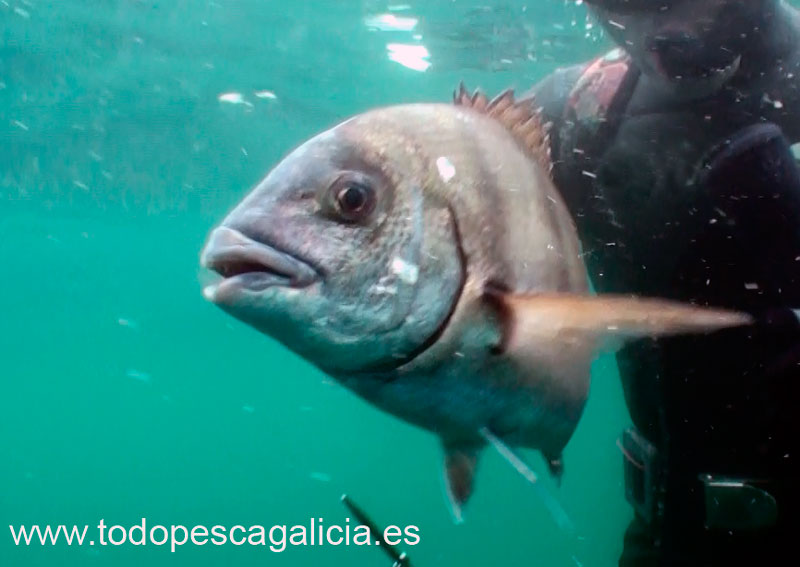 During the low tide, and close to the shore (or even in the shore) we will see them if there are canals or cracks with shade.
During the low tide, and close to the shore (or even in the shore) we will see them if there are canals or cracks with shade.
During the high tide, again in the breaks. Those summer days with warm and dirty water in the surface will be good to do big fishings of white seabream. And very easily also. The dirty water will allow us to get close to them before they detect us. We will find good shooting opportunities against the light. Even if it seems impossible to see anything. When there are big patches of red water, if we start the dive far, go down and go up again very close to the rocks, we will find them eating there in half a meter of depth.
Autumn
Another key moment. The kelp starts to break. The white seabream, that was sheltered between them, remains confident. And we will be able to see them and catch them easily. September and October will be the best months for this technique.
And of course the breaks during the high tide. A video showing how to fish white seabream in the broken kelp forest:
THE TIDE
The general rule is easy: high tide, look for the white seabream in the breaks. Low tide, look for them in caves or in the kelp. Of course, it doesn’t always apply, but is the most common. 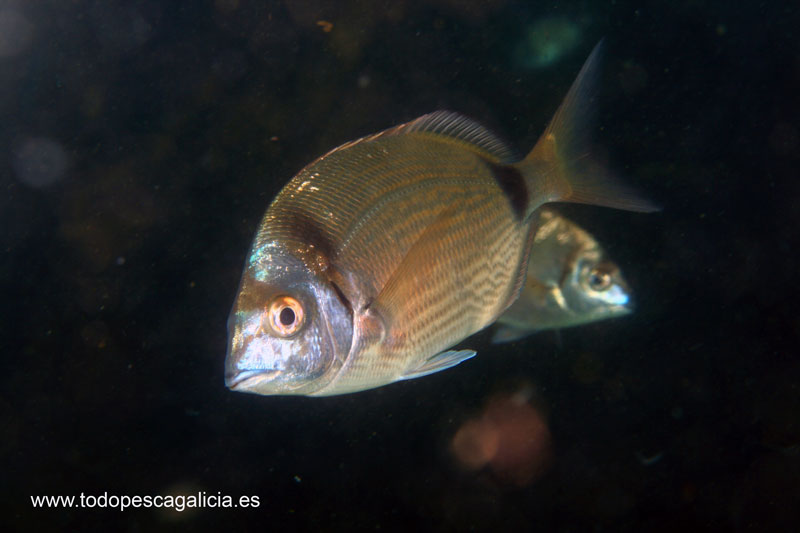
As we can see, the white seabream fishing is not complicated. In the breaks, in caves, in the kelp, waiting… whatever our favorite technique is, we could catch them. And also, it is a great catch at a gastronomic level.
Be very careful when fishing in the breaks. We should know how far we can go into. That’s a matter of each fisherman’s common sense.
Fishing this fish in the breaks is the situation that could be the most affected by other spearfishermen. If someone passed before us, it’s probable that we are not going to see any. Although we could try to find them a little bit away from the shore, with the waiting technique or looking inside caves.
And the cracks in the breaks, are very good spots to fish them.
Some videos fishing white seabream:
White seabream in the break:
White sea breams in the kelp, double shot:



